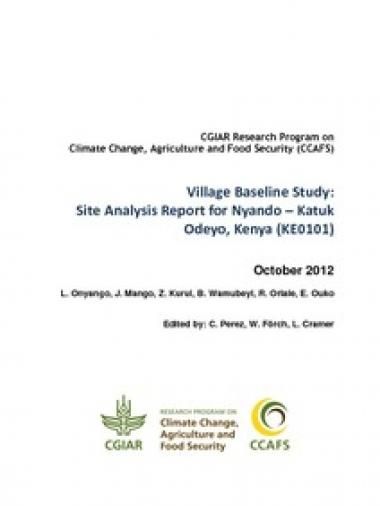Village Baseline Study: Site Analysis Report for Nyando – Katuk Odeyo, Kenya

This is the report of the village baseline study of Kamuana village in the CCAFS benchmark site of Nyando, Kenya, which took place from 18 to 20 May 2011. Population pressure has created land fragmentation and reduction in the area of land that families have under cultivation. These conditions plus unpredictable rainfall patterns have reduced agricultural production but attempts to increase production have led to over-cultivation, soil exhaustion and erosion. Meanwhile, demarcation of land, private ownership and commercialization has reduced access to natural resources. Increased demand and commercialization has led to cultivation of cash crops and use of modern technology, but farming families have very limited resources. Not surprisingly, cultivated land has expanded at the expense of the area left under forest.
Eighteen out of the 19 organisations operating in the community were engaged in food security, which shows the importance and the fragility of food security in the community. The same organisations engage in times of food crisis. Twelve organisations are involved in supporting natural resources management. Radio Ramogi and Radio Lake Victoria are the most popular sources of agriculture-related information. The community primarily relies on observations of the environment for information on weather conditions.
Citación
Onyango L, Mango J, Kurui Z, Wamubeyi B, Orlale R, Ouko E. 2012. Village Baseline Study: Site Analysis Report for Nyando – Katuk Odeyo, Kenya. Copenhagen, Denmark: CGIAR Research Program on Climate Change, Agriculture and Food Security (CCAFS).